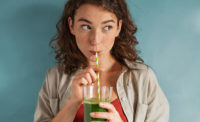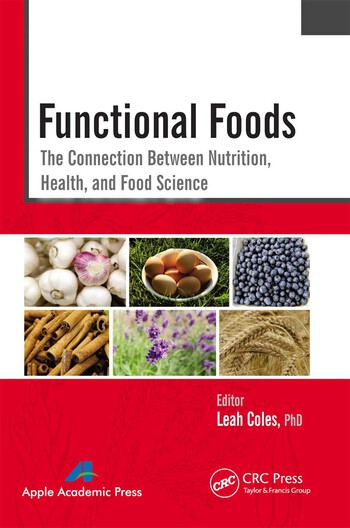Flavored, Enhanced Waters Have Consumers Bubbling with Enthusiasm
New innovations include unique flavors and functional ingredients that offer consumers an expansive range of liquid options

Natural flavors and nutraceuticals in water are raising the hydration experience to higher levels of demand.
PHOTO COURTESY OF: Flavor Producers, LLC

Rich in vitamins and minerals, jicama is one of the more unusual sources among the plant-derived hydration water offerings.
PHOTO COURTESY OF: XICAMA Water/IQ Foods International Inc.

Consumers are subbing new flavored waters for their favorite soft drinks, driving the “water-plus” category higher than ever.
PHOTO COURTESY OF: AHA/The Coca-Cola Co.

Keeping a short ingredient list is often desired when creating better-for-you water option.
PHOTO COURTESY OF: Glaceau Smartwater/Energy Brands, Inc.




The flavored water category experienced a huge growth spurt in the last decade, and both entrepreneurial and major beverage brands continue to step up with their take on the concept. As dietitians, health experts, and fitness gurus began stressing water intake as one of the most crucial parts of people’s daily routines, consumers agreed and water sales began booming.
But many consumers find plain water boring, so the drive was on to make water a more attractive beverage to compete with highly caloric options, as well as to boost its nutritional value. New releases in this space have been enhanced to include unique flavors and functional ingredients that offer the consumer an expansive range of liquid options.
Crafting a flavored water, even in its most basic form, comes with its own set of challenges. Formulating a non-carbonated flavored water can often be tricky for R&D teams designing a product that balances defined ingredient profiles with a holistically pleasant drinking experience.
Some established brands have enjoyed continued success in this arena while staying relevant with consumers through proprietary processes. Examples include Hint Water, Inc.’s line of flavor-infused and caffeine-infused waters; PepsiCo’s Propel line of flavored and vitamin/electrolyte-enhanced waters; and Nestlé SA’s Splash purified and flavored waters.
Competition Bubbling Up
Defining the seemingly unquenchable consumer thirst for flavored and enhanced waters, several smaller brands also have experienced big growth. Those reaping the fruits of their labor include Spindrift Beverage Co., Sanzo Water Co., and Free Rain Products, LLC, all of which contain pure fruit juice or fruit purée.
Of these, Free Rain pushed the envelope with more challenging botanicals, a higher juice concentration than had been typical (up to 20% fruit juice), and intriguing flavor combos such as Tart Cherry and Siberian Ginseng, Blackberry-Passionflower, and Blood Orange Ginger and Ashwagandha. Sanzo dove into the Asian flavors experience, with exotic fruits such as lychee, yuzo, calamansi orange, and Alphonso mango.
The choice of flavor plays a major role in the formulation of these beverages, especially with the decision to have low to no sweetness. Certain flavor profiles have been shown to perform better than others. Citrus is a top performer in this category, as the oils utilized require the least amount of configuring.
Berry and mango flavors can be less cooperative, producing off-notes at high levels. In particular, mango tends to develop sulfur notes when too much is added. However, this doesn’t mean that all hope is lost when wanting to create a beverage using more problematic flavors.
Right Touch
When striving to achieve a tasty finished product, the addition of sweeteners and acids impact how bold the flavors taste to the average consumer. Product development and taste modulation teams have enjoyed great success in this area by turning to flavors that have modulating properties and maskers. On their own, such ingredient systems can amplify characterizing flavors while simultaneously masking off notes. Moreover, they can improve mouthfeel.
Ingredient and beverage development experts can also combine such flavor and masker/modulator ingredients to create a custom blend for their client. They even will conduct repeated organoleptic testing in-house. The client not only will benefit from the support of multiple elements and inputs to keep ingredients to a minimum, they also will be better able to keep their product positioned in its category.
Water Plus
The surge of functional beverages flooding into the flavored water space is likely to continue into the next year and beyond. Already, waters containing added ingredients such as vitamins, minerals, protein, botanicals, antioxidants, collagen, and caffeine are filling retail shelves and display cases. And the explosion in cannabis-derived ingredients in water beverages is only just getting started.
The labeling and marketing of enhanced waters target energy, beauty, athletic performance, relaxation, sleep, eye health, cognitive performance, gut health, immunity, weight management, and more. Botanically enhanced waters are taking the lead in this category. The purported anti-anxiety botanical ashwagandha is an example of such an ingredient recently landing in water beverages. It is typically incorporated into a drink for its adaptogenic qualities, but it can contribute an unpleasant taste and a muddy color.
Maskers are necessary to hide ashwagandha’s negative flavor profile, often described as “dirt-like.” However, its main bioactive compounds, withanolides, are lipid-based molecules and highly insoluble. This means that, as with any lipid-based bioactive (such as vitamins A, D, E, and K, choline, coenzyme-Q10, or carotenoids such as astaxanthin, lutein, or lycopene), to be used in an enhanced water product, such lipid-soluble ingredients must be expertly microencapsulated in order to be rendered water-soluble without negatively impacting the appearance of the final beverage.
Natural caffeine sources for an added energy boost have been in high demand, so ingredients like guarana, yerba maté, green coffee, and green tea are also common in many water beverage products. On top of the hydrating benefits delivered by pure water, there are many new releases of enhanced and flavored water that contain such ingredient compounds as an electrolyte blend (primarily potassium, magnesium, and sodium).
Other waters are drawn from plants instead of ponds. While the best and most ubiquitous example is coconut water, water from aloe, prickly pear, and other cacti or from trees such as birch (a common drink in Slavic countries) and maple are flooding into stores. Two of the most unusual—and flavorful—examples in this category are artichoke water and jicama water. The latter has the extra advantage of being naturally slightly sweet flavor and its rich complement of vitamins and minerals
According to a 2022 study by Allied Market Research, the flavored water category is expected to hit nearly $32 billion by 2030, growing at a CAGR of 5.5% from 2021 to 2030. This growth progression is predicted to continue, serving the rising consumer demand for more functional, low-sugar, water-based hydration options.
The beverage industry will continue to test the waters of water beverages with an expanding array of nutraceutical ingredients. Coupled with the adoption of more globally inspired flavors, keeping pace with this category’s growth can be swiftly and effectively achieved.
Erin Costello is an associate at Imbibe, Inc. Since 1963, Imbibe has been accelerating the growth of the food and beverage industry as an unrivaled R&D partner. Imbibe’s end-to-end food and beverage product development services enhance upstream and downstream operations. For companies that have limited internal resources to teams with sophisticated development capabilities, Imbibe is able to unlock the potential of the food and beverage industry by creating innovative flavors and ingredient systems that help drive differentiation in purposeful products. More information on Imbibe’s diverse skill set and services can be found online at www.imbibeinc.com.
Tiny Bubbles Are Huge
Carbonation is often a path of least resistance when it comes to ensuring that the flavor profile is enjoyable. When adding more flavor could have adverse effects (anywhere from being cost-prohibitive to imparting off-flavor notes, or running afoul of regulatory guidelines), utilizing carbonation is a mechanism that enhances the aroma and flavor of a beverage.
This is certainly reflected in the massive and enduring popularity of sparkling waters. According to consumer research group NielsenIQ, support for conventional soft drink alternatives is evident in recent dollar sales for the sparkling water category. They’ve grown by a whopping 20.4%, equating to $267 million in convenience store sales alone for the 52 weeks ending January 29, 2022.
Avoiding Troubled Waters
Bottled drinking water is regulated by the FDA and EPA. While there is no legal definition of water in the US Code of Federal Regulations (CFR), it is assumed that the average consumer and industry professional understands that water is unadulterated H2O. A commercial beverage cannot technically be called “water” if it contains more than this single ingredient. Instead, it must apply the words “drink” or “beverage” at the end of the product’s standard of identity.
Some brands have been able to work around these regulations by using creative brand names, which are not regulated by the FDA or USDA. Many companies just include the term “water” in their trade name. Although their beverages contain other ingredients, chosen brand names give the ability to directly associate their products with the pure liquid. They do typically employ more detailed verbiage on their identity statement, such as “Nutrient-Enhanced Water Beverage,” “Sparkling Water Drink,” or others.
Looking for a reprint of this article?
From high-res PDFs to custom plaques, order your copy today!











